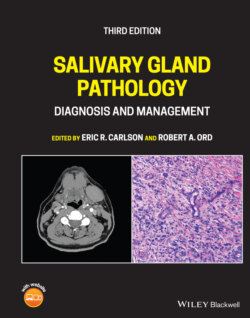Читать книгу Salivary Gland Pathology - Группа авторов - Страница 131
Viral Salivary Gland Infections MUMPS
ОглавлениеViral mumps is an acute, nonsuppurative communicable disease that often occurs in epidemics during the spring and winter months. The term mumps is derived from the Danish “mompen,” which refers to mumbling, thereby describing the difficulty with speech because of inflammation and trismus (McQuone 1999; Arrieta and McCafrey 2005). The nearly routine administration of the measles–mumps–rubella (MMR) vaccination has decreased the incidence of mumps in industrialized nations. Since the introduction of the live attenuated vaccine in the United States in 1967 and its administration as part of the MMR vaccine, the yearly incidence of mumps cases has declined from 76 to two cases per 100,000 (Murray et al. 1994). Mumps characteristically occurs in the parotid glands. Although the disease is typically seen in children between six and eight years of age, it may occur in adults who have avoided childhood infection, as well, and displays an equal sex predilection. The disease is caused most commonly by a paramyxovirus, a ribonucleic acid virus related to the influenza and parainfluenza virus groups. Several other nonparamyxoviruses may cause mumps, including coxsackie A and B viruses, Epstein‐Barr virus, influenza and parainfluenza viruses, enteric cytopathic human orphan (ECHO) virus, and human immunodeficiency virus (HIV). Mumps is transmitted by infected saliva and urine. The incubation period between exposure and the development of signs and symptoms is 15–18 days. A prodromal period occurs that lasts 24–48 hours and involves fever, chills, headache, and preauricular tenderness. Following the prodromal period, rapid and painful unilateral or bilateral swelling of the parotid glands occurs. Features that distinguish sialadenitis due to mumps versus bacteria include a lack of purulent discharge, positive serum titers for mumps, and a relative lymphocytosis in mumps. In addition, the clinical presentation of mumps is mild; not infrequently, patients may be asymptomatic (Schreiber and Hershman 2009). The diagnosis is made by demonstrating complement‐fixing soluble (S) antibodies to the nucleoprotein core of the virus, which are the earliest antibodies to appear. These antibodies peak at 10 days to 2 weeks and disappear within eight to nine months. The S antibodies are therefore associated with active infection. The complement‐fixing viral (V) antibodies are against outer surface hemagglutinin and appear later than S antibodies but persist at low levels for years. The diagnosis may also be made by isolating the virus from urine, which is possible up to 6 days prior and 13 days after the salivary gland symptoms occur (Rice 1998. Serum amylase levels may be elevated regardless of an associated pancreatitis. Abdominal pain is often indicative of mumps pancreatitis. Mumps orchitis occurs in 20% of adult males who have mumps parotitis (Goldberg and Bevilacqua 1995). Approximately half of these males will experience secondary testicular atrophy that may result in sterility if the testicular atrophy occurs bilaterally. Other rare complications of mumps include mumps hepatitis, mumps myocarditis, and mumps thyroiditis.
Treatment of mumps is supportive as spontaneous resolution of the disease occurs within 5–10 days. Such supportive care includes bed rest, proper hydration, and dietary modifications to minimize glandular activity. Persistent or recurrent parotid swelling may indicate the presence of sialadenitis. In the presence of such symptoms, a CT scan may be ordered that will frequently identify generalized sialadenitis to all salivary glands (Figure 3.18).
